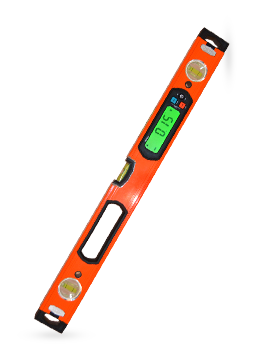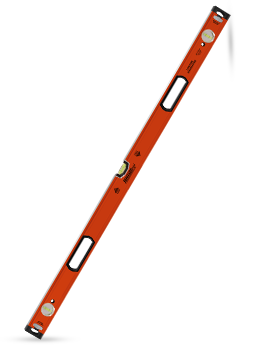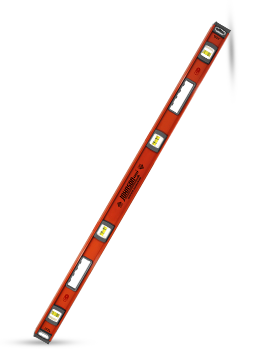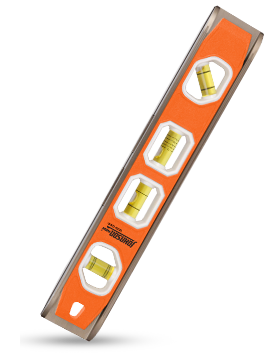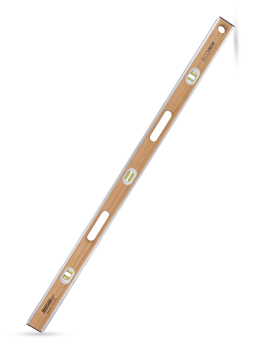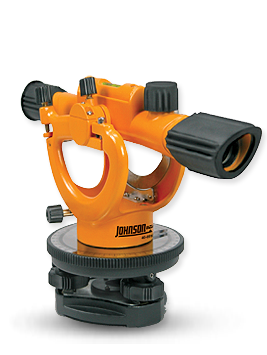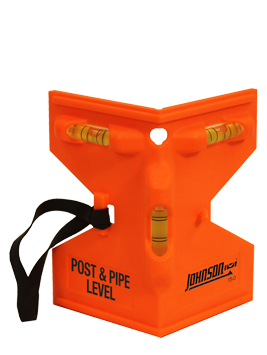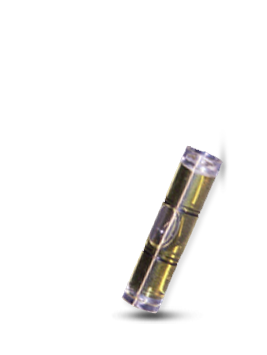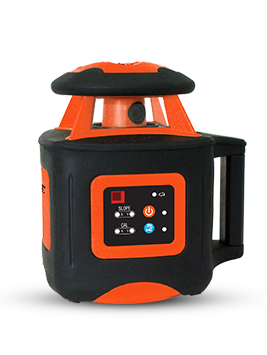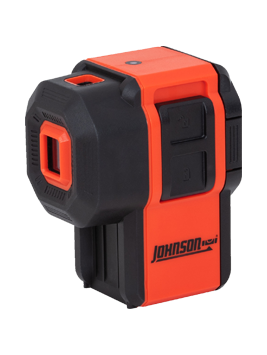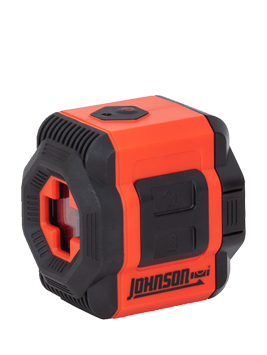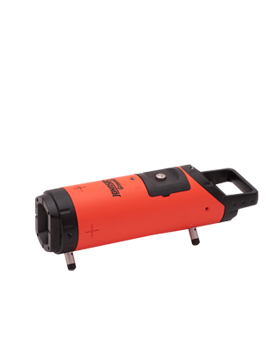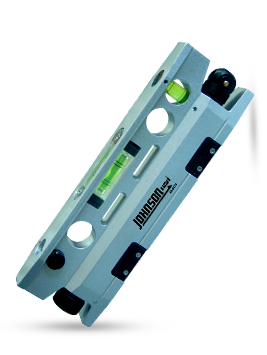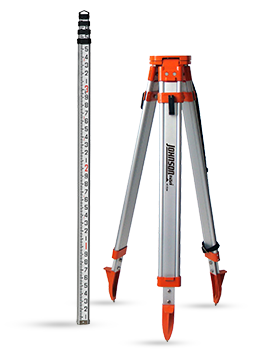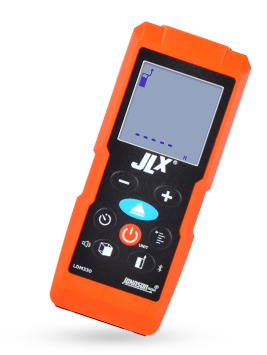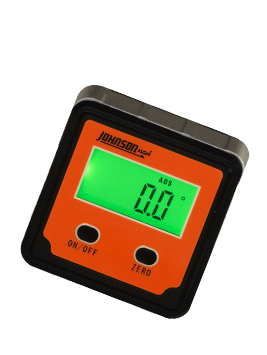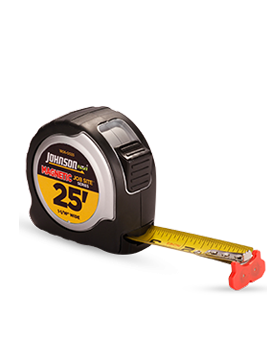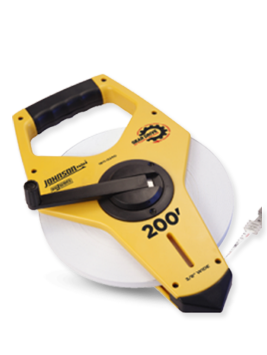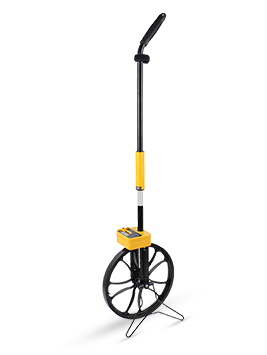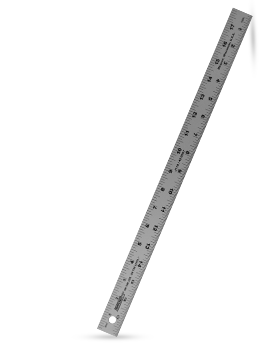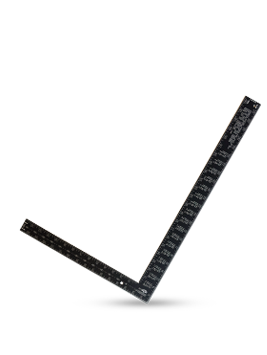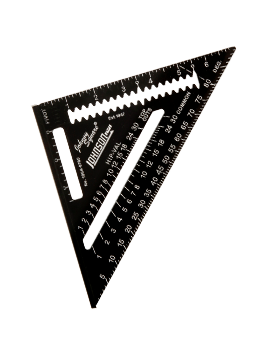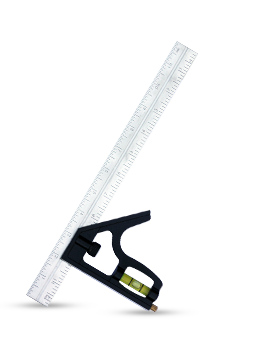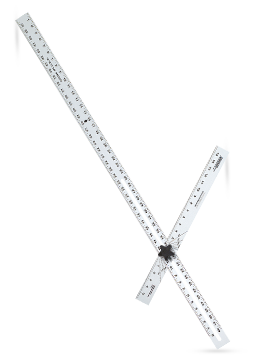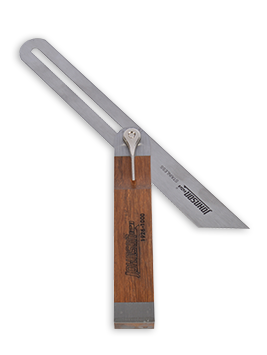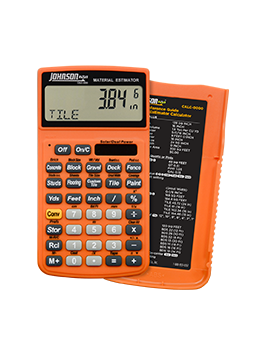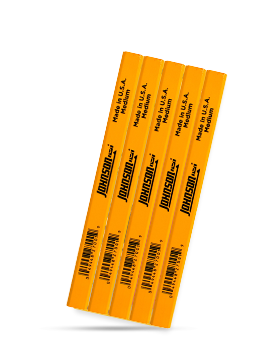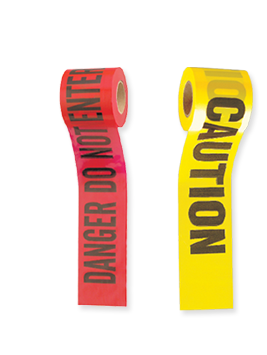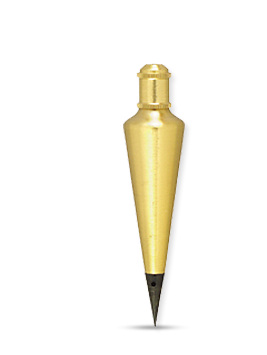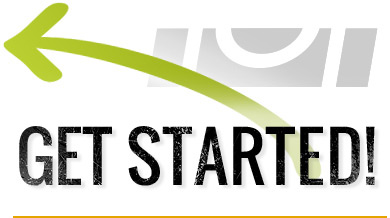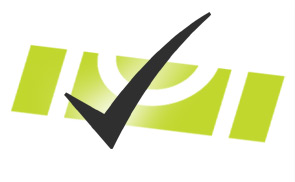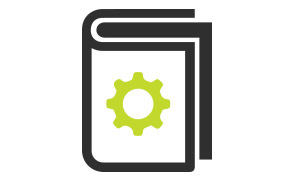From Water Levels to Laser Levels
You may be old enough to remember water levels, but you're still young enough to get hooked on lasers.
Like cell phones and Palm Pilots, laser levels are rapidly becoming high-tech staples in many contractors' tool bags. If you don't use them yet, you'll probably find yourself left behind on layout speed, daunted by complicated designs. A single laser however, won't perform all the functions you need as efficiently as you'd like. I've found that a fixed-point laser and a separate rotary laser is the best combination for me.
For the last 10 years, I've been a contractor in the New York metro area. I focus on high-end residential and commercial office projects. This work generally requires complex layouts that laser levels can make quick work of. Whether we're laying out a foundation for a new home or establishing perimeter lines in a pre-war office building, Johnson laser levels and chalklines are first out of the box and all of my layout guys use them throughout the job.
Building Foundations
The more accurate and level a foundation is, the easier it is for all other trades to do their work. If the foundation grades and subsequent floor framing were perfectly level, theoretically you'd only need a tape measure and framing square to build a square and level structure. But we all know that's impossible given the realities of jobsite conditions and lumber variations. Some of us remember laying out foundations with water levels and transits, but these devices have shortcomings that laser levels don't.
Anyone who's used a water level knows how frustrating it is to operate. Transits are a major improvement over water levels, but they're susceptible to human error: The slightest change in position throws a transit fatally out of accuracy. If the set-up man doesn't read the leveling vials properly or bumps the tripod, it knocks everything out of level -- including your foundation.
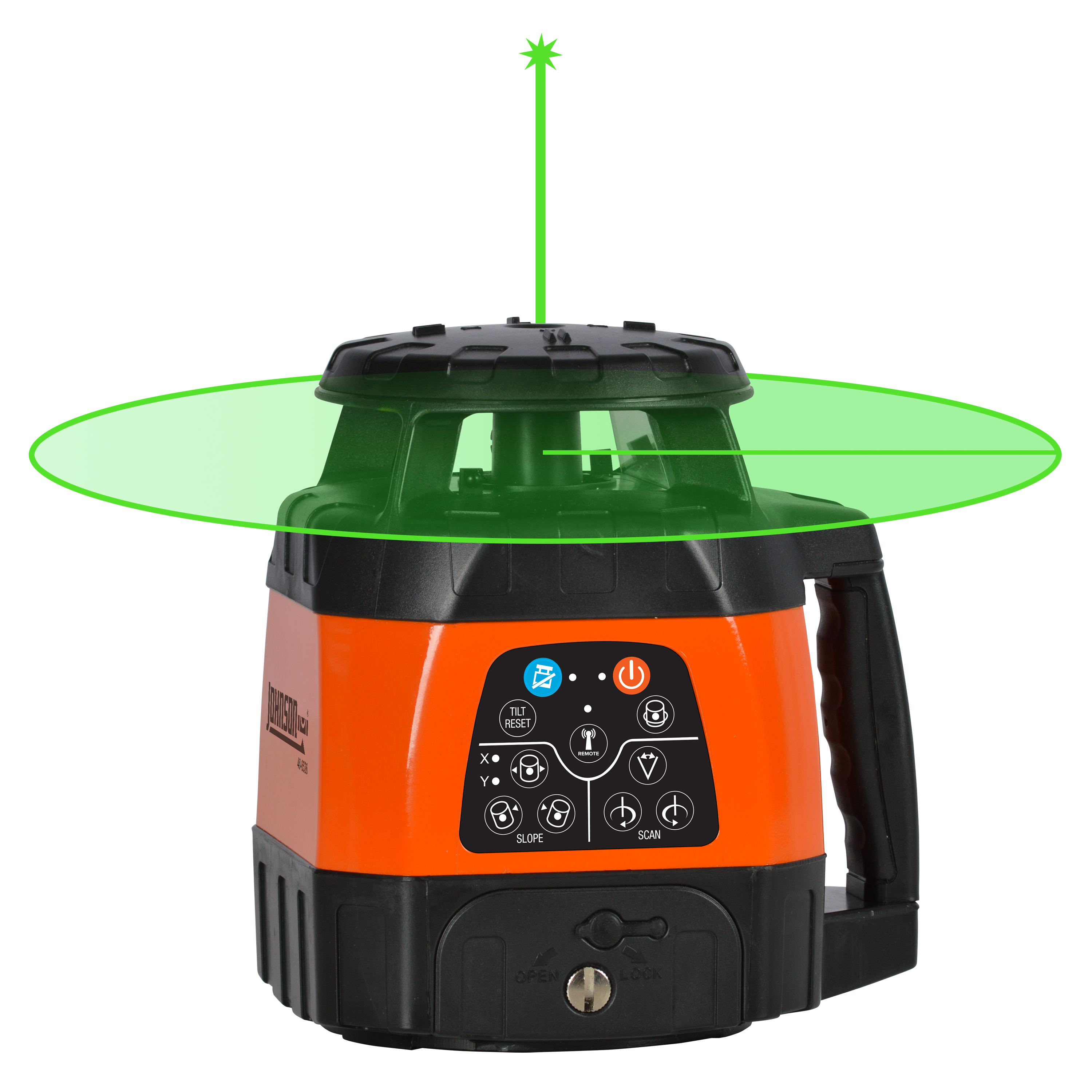 A good self-leveling rotary laser level can eliminate those problems. Set one up, turn it on, and the laser automatically finds level and shoots a red dot up to 200 hundred-plus feet that's accurate to within an 1/8-inch. With remote-controlled operation and remote receivers, your layout man needn't be near the laser, reducing the chance of bumping into it. If, however, it does get bumped or jostled by a shaky floor, the tool signals you there's a problem. Layout becomes a one-person job and given today's labor rates, those substantial savings justify purchasing the tool.
A good self-leveling rotary laser level can eliminate those problems. Set one up, turn it on, and the laser automatically finds level and shoots a red dot up to 200 hundred-plus feet that's accurate to within an 1/8-inch. With remote-controlled operation and remote receivers, your layout man needn't be near the laser, reducing the chance of bumping into it. If, however, it does get bumped or jostled by a shaky floor, the tool signals you there's a problem. Layout becomes a one-person job and given today's labor rates, those substantial savings justify purchasing the tool.
We use our rotating laser level to lay out excavation stakes. Then our excavator gives us a nice 8- to 10-foot-deep hole so we can start pouring footings and setting up wall forms. Our laser level makes its second appearance for marking footers. It shoots a constant level line, acting like a transit that's infinitely easier to set up and use. Thanks to the tool's automatic leveling feature, a layout man presses the on button and can be completely confident that the laser will shoot a red dot in perfect level.
Since the laser spins, it projects level points 360 degrees. Using a marking stick, footing form boards are easily brought up to level. A remote-controlled device lets us position the laser's red dot exactly and keep it there as long as necessary, which is essential for setting forms -- especially warped or damaged ones. After we've set the wall forms on the footings, we use the laser to set grade for the top of the foundation walls before the pour.
Construction Framing
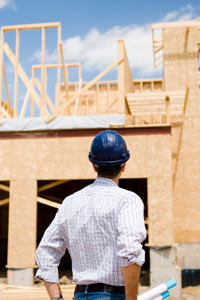 We also use our lasers to establish level and plumb lines during framing whether it's a new home or an old building. With an old building, we often need to establish a reference line on the floor so we can lay out the rest of the space. For this task, too, I suggest springing for the cost of a self-leveling device. In a few seconds, you can establish a top wall plate location and create a line from which you can then pull measurements to establish your other walls. With the laser mounted horizontally, soffits, doors, and knee walls are quickly laid out. The numerous mounting devices available -- pole stands, adjustable tripods, and mounting brackets -- let you do many layouts on the mark without having to extend points with a tape measure.
We also use our lasers to establish level and plumb lines during framing whether it's a new home or an old building. With an old building, we often need to establish a reference line on the floor so we can lay out the rest of the space. For this task, too, I suggest springing for the cost of a self-leveling device. In a few seconds, you can establish a top wall plate location and create a line from which you can then pull measurements to establish your other walls. With the laser mounted horizontally, soffits, doors, and knee walls are quickly laid out. The numerous mounting devices available -- pole stands, adjustable tripods, and mounting brackets -- let you do many layouts on the mark without having to extend points with a tape measure.
On new construction, we return to the site with laser in hand once the foundation has cured. Putting the laser on a tripod, we set the sills and easily bring them to level. Because we shot the foundation with the same tool, it takes only small adjustments to level the sills, which we accomplish with a handful of shims inserted here and there.
The tighter the sill is to the foundation (i.e., fewer shims), the stronger the structure is. It's less likely to settle or squeak. Once the sill is on and leveled properly, the rest of the framing could be done with a tape measure, right? Given today's lumber quality and new guys' inability to read tape measures properly, it's always a good idea to keep a laser level handy. Shooting a level line periodically during the project's course ensures that all framing is built level, which gives you a chance to find problems early on.
Finish Carpentry
After the rough framing is complete, it's time for all those crazy half walls, dropped soffits, and vaulted ceilings architects love. With the advent of CAD, architects are developing increasingly complex designs and I've found that using a laser level is the only way to keep up. Because we can set one up in virtually any location with the right mounting device, my crew can lay out almost anything an architect can come up with. Even arched vaulted ceilings are fairly easy; once you establish a level line around the room, you can swing your arc using a chalk line or a long, straight 2x4.
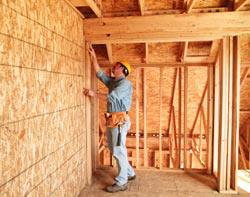 Laying out door and window heights with lasers increases the efficiency and quality of our work with very little effort. Using the tools to establish consistent heights on those openings ensures that all interior trim is also consistent. That's especially important for elaborate and expensive moldings. And when your siding crew sees that you've aligned all the doors and windows consistently, they'll probably buy you lunch for making their job easier and their work better-looking.
Laying out door and window heights with lasers increases the efficiency and quality of our work with very little effort. Using the tools to establish consistent heights on those openings ensures that all interior trim is also consistent. That's especially important for elaborate and expensive moldings. And when your siding crew sees that you've aligned all the doors and windows consistently, they'll probably buy you lunch for making their job easier and their work better-looking.
Uneven window and door heights become a nightmare when siding crews try to maintain reveals and proper spacing. Your siding crew might even have their own laser setup to level and check their courses.
Finish carpenters are also fans of laser levels. Shooting a level line around a room gives our carpenters instant points for chair-rail heights, cabinet locations, and shelving. It's a hassle to wrap a 4- or 6-foot level around a room. It's invariably inaccurate, and measuring off the ceiling or floor for level is a risky proposition.
With a laser tool, there's no need to question floor unevenness or level because self-leveling lasers operate independently of floor imperfections and establish a level line no matter what.
Other Trades, Other Phases
Suspended Ceiling Installers - These guys were among the first to use laser levels on their jobs, especially in commercial situations where runs are really long. They establish one good reference line, then clip a rotating laser to the ledger. Now they've got a perfect line for the rest of the ledger, track, and all their tie wire. Unlike a pencil line, you shut the laser off and the mark disappears. That's especially nice for painted walls.
Plumbers - These subs often use point-to-point lasers to mark pipe layouts and establish pitch over long runs. A point-to-point laser shoots two to five points: parallel, plumb, square to each other, or some combination of the three. This makes it easy to mark overhead fixture locations like showerheads and A/C units. Fixture locations are laid out on the floor; then the laser transcribes the marks right up to the ceiling like a plumb bob working in reverse.
We increasingly find our projects being marked out on the floor and then shot up to the ceiling. This makes layouts faster, more accurate, and safer. Nobody has to reach up from the top of a ladder to pull measurements off ceilings and walls or fiddle with a plumb bob.
Electricians - Many electricians are fond of using lasers for easy fixture placement. Nothing is better suited for outlet and switch height layouts or marking recessed cans or chandeliers. The simple point-to-point devices work well for these tasks. My clients often ask me to center a lighting fixture over a dining room or conference table. After we lay out the table placement on the floor and find its center, the laser does the rest by shooting it straight up to the ceiling.
Tile Installers and Masons - Some of the better point-to-point lasers shoot three or more points perpendicular to each other, giving a tile installer an instant grid to lay out a floor. There's no need to rely on a bent framing square, Pythagorus, or those awkward, oversized squares to establish lines. Place the laser in the right location, press the on button, and the tool creates an instant set of points. Snap a few lines and you're ready to roll. Or, if you're climbing a wall with tile, a rotary laser's level line won't disappear under your thinset like chalk does.
Even our painters and landscape contractors use laser levels - The painters use them to set paint breaks on walls so they can tape perfectly straight lines across numerous corners or breaks. And our landscaper tunes his grading and sets retaining wall heights by shooting them with laser tools.
Keep in mind that lasers are only accurate when they're actually in use. Keeping them locked away in a gang box, shop, or office won't help you speed up layouts or improve your accuracy. You must insist that your crew use laser levels as often necessary, not just in the beginning of the project.
The construction industry is slow to change, especially when it comes to tools. But technology is changing fast, and old-school carpenters and tradesmen have to change with it. If you equip an experienced crew with point-to-point and rotary lasers they'll be able to tackle almost anything.
Erik Elwell is a contractor in the New York metro area who specializes in office build-outs and high-end residential construction.
